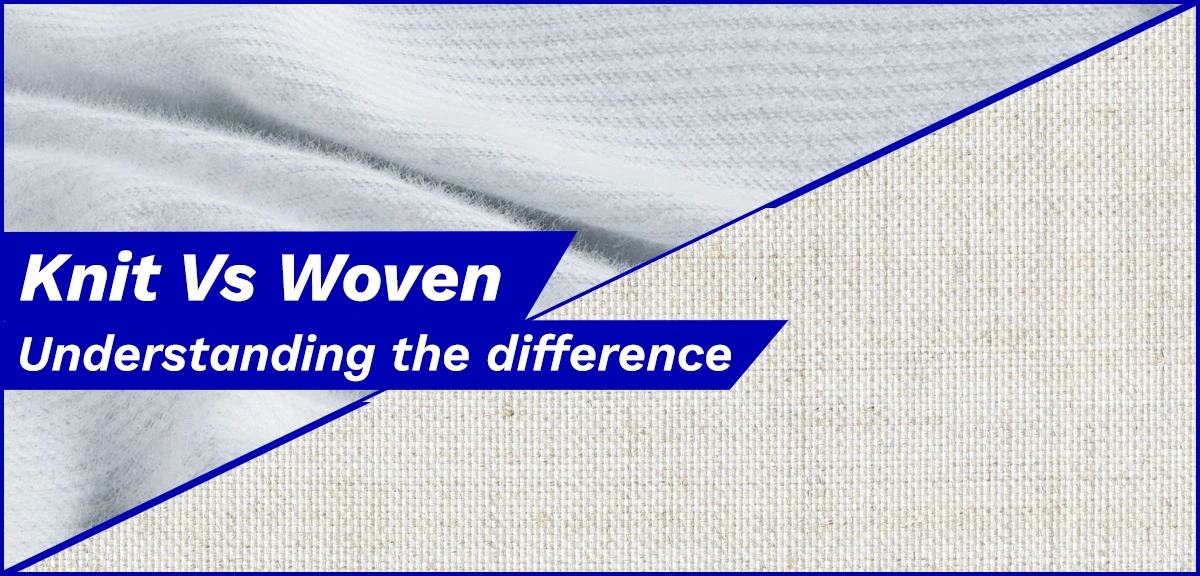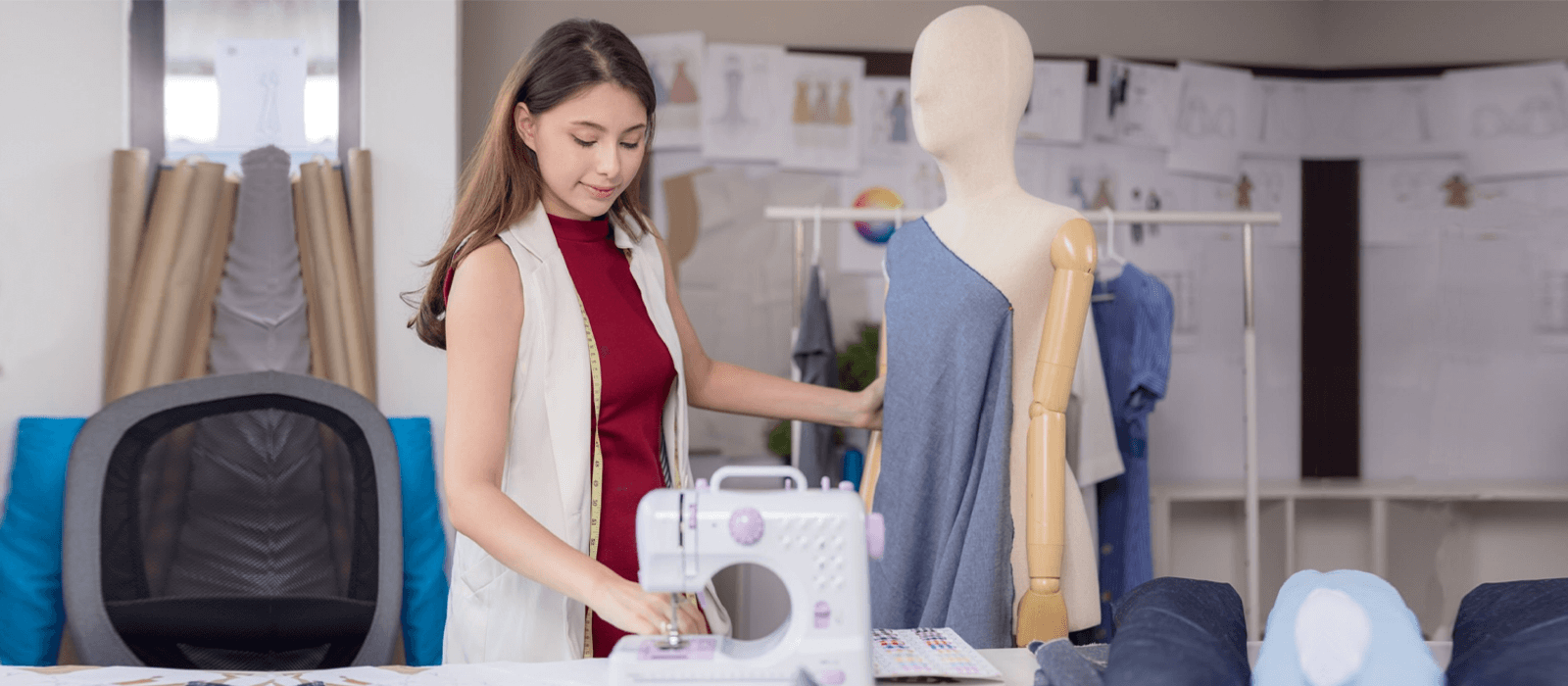The struggle of finding the best quality clothing is not new in this century. It has been here for centuries. However, the introduction of knitwear production has made a clash with woven fabrics.
Knitting and weaving are two unique methods of fabric production yielding specific results. Both materials have their own qualities. Orient Apparel, as one of the most reliable knitwear and woven apparel exporters, explains the depth of each so that every garment manufacturer can select the best material.
Knitted Fabrics
Knitted fabrics are made with a single type of yarn. The formation method involves interloping the yarn using closely spaced needles. Both circular knitting machines and flatbeds can be used for the production of these fabrics.
Knit material can be made of weft yearns or warp yarns. Both of them offer stretchability due to their low dimensional stability. The looping texture gives its softness, making it a comfortable fabric type. Jersey, fleece, and spandex are the most commonly knitted fabrics nowadays.
Examples of knitted garments: T-shirts, leggings, sportswear, trousers, and cardigans.
Woven Fabrics
Woven fabrics are made with at least two yarns, intercrossing each other at right angles. This generates a grid-like pattern, just like an endless tick-tack toe. This is also what gives woven material its endurance and strength. You can try to distort it and, for a limit, it will resist.
The low stretchability of woven makes it hard to make one-size-fits-all garments. Thus, woven garment manufacturers have to carefully create tailored fitting for clothes. Cotton denim and wool are exceptional examples of this fabric type.
Examples of woven garments: Scarves, skirts, button-up shirts, pants, and denim clothes.
Top Differences Between Knit and Woven
- Look
The looping pattern makes knit fabric have a braided appearance. The woven fabric, on the other hand, delivers a criss-cross pattern.
- Stretch and Recovery
The interloping knitwear production makes them stretchable. That’s why they offer a range of flexibility and easily adjust to a person’s body shape. This feature is not found in woven fabrics. Their limited stretch along the width makes them a non-fitted garment.
- Breathability
Woven fabrics have a mesh-like structure that offers breathability. Due to this ability, woven fabrics are suitable for hot and humid weather conditions. Knits may be congested depending on their production and fiber content.
- Dimensional Stability
Woven fabrics are more stable for stitching and handling. The knitted one is flexible, meaning it has low dimensional stability, making it difficult to maintain its shape when stitching.
- Production Techniques
Woven garments manufacturers in Pakistan use traditional looms to create intricate woven textures. Whereas, knitwear manufacture involves using knitting machines for a seamless finish.
- Seam Construction
Woven fabrics require seams for shaping, while knit fabrics can often be cut and sewn with minimal seaming due to their stretchiness. This can affect the comfort and overall appearance of the garment.
- Styles and Designs
For their stability, woven fabrics make an excellent source for experimenting with designs and intricate patterns. Whenever manufacturers want to create a well-structured design, they choose the woven fabric. Knits are perfect for designing stretchable, form-fitting garments.
- Wrinkles Resistance
When pressed, knit fabrics are the first ones to retain a smooth shape. Woven fabrics are hard to iron. The material requires steam pressing, and the texture is also visible after it is pressed.
- Durability
Though both materials are durable, woven takes the lead for being more long-standing. However, they fray easily and require overlocking. Knitted fabrics do not fray but are more stretchable. Thus, they may become loose and stretch out.
Common Uses of Both
Woven fabrics are here for thousands of years. No wonder why they are most widely used around the world and in the fashion industry. You can find woven fabric in pretty much every garment out there, involving shirts, pants, skirts, suits, and dresses. Its durability makes it a popular choice among the masses.
Knit fabrics are relatively new but their popularity makes them seem like an old friend. Their production is more affordable than woven textures. T-shirts, leggings, undergarments, swimsuits, and almost all gym and sportswear are examples of knit material. Knitwear garments manufacturers produce these articles in huge quantities, making them an affordable and fast-fashion component.
Which Is Better, Knit or Woven Fabric?
First of all, you have to know that these two fabric types are not competitors. None of them is superior to the other. On the contrary, both woven and knit fabrics are necessary for a comfortable, durable, and classy fashion for ages.
Which one to choose for your garments production depends on your specific needs. For example, a formal suit would look crisper and sharper when made woven. Similarly, gym wear articles require stretchability, naming knit the perfect fabric for it. You can even strategically use both materials to create a perfect garment piece.
Take Away
In conclusion, we want to say that both knit and woven fabrics have their unique qualities. Rather than arguing about which is better, consider the qualities of both to find a fabric that will best suit your garments. Knit and woven garments manufacturers in Pakistan and abroad should focus on getting the best quality fabrics for their clothes.
That is the only way to achieve success in the fashion business. Orient Apparel prides itself on being one of the best knit and woven apparel exporters. We deal with both knitted and woven fabrics and ensure high durability and comfort through our premium materials.





